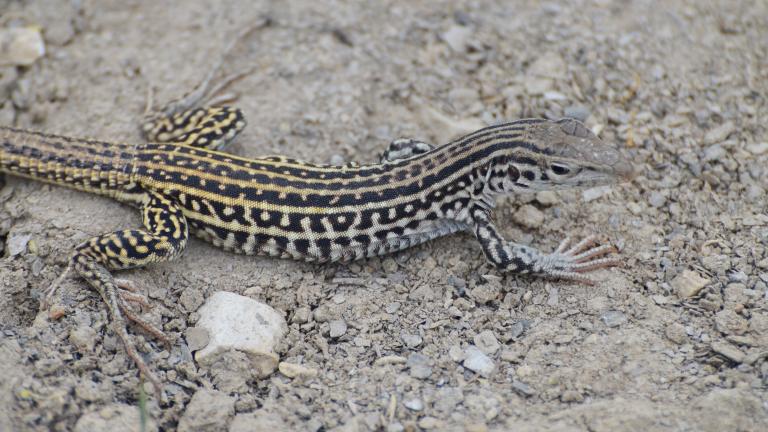Common Checkered Whiptail
This insectivore is an all-female species found scattered throughout southeastern Colorado.

About This Species
Difficult to distinguish from Colorado Checkered Whiptail, this species is all-female and reproduces via a process where all of their offspring are clones of the parent.
More Information:
Physical Characteristics
Body and tail long and slender; upper side with small granular scales; belly with larger rectangular scales; scales along front edge of fold of skin across throat conspicuously enlarged. Pale stripes bordering midline of back gray-tan to tan or gold, irregular in outline, interrupted, and/or fused with bars; stripe along middle of back gray-tan to tan (or absent), single and irregular, or doubled or partly doubled; lowermost stripe on side of body gray, irregular, and/or interrupted and fused with spots and/or bars (these stripes may be partly or entirely lost in older individuals); area between two uppermost pale stripes (not counting the stripe along the middle of the back) on each side of upper side with pale spots, either fused lengthwise into a line or transversely expanded into bars; upper surface of thighs with profuse pale spotting and some spots fused; maximum snout-vent length about 10.6 cm (4.2 inches).
Range
Scattered locations in southeastern Colorado.
Habitat
Bottoms, slopes, and escarpments of rocky canyons, often where grassland or grassy-weedy associations meet open juniper woodland. This ground-dwelling species hides in burrows or in spaces under rocks; it may dig its own burrows.
Reproduction
This is an all-female species that arose through hybridization between other whiptail species. Adults produce 1-2 clutches of eggs between late May and early July. The earliest hatchlings emerge in August.